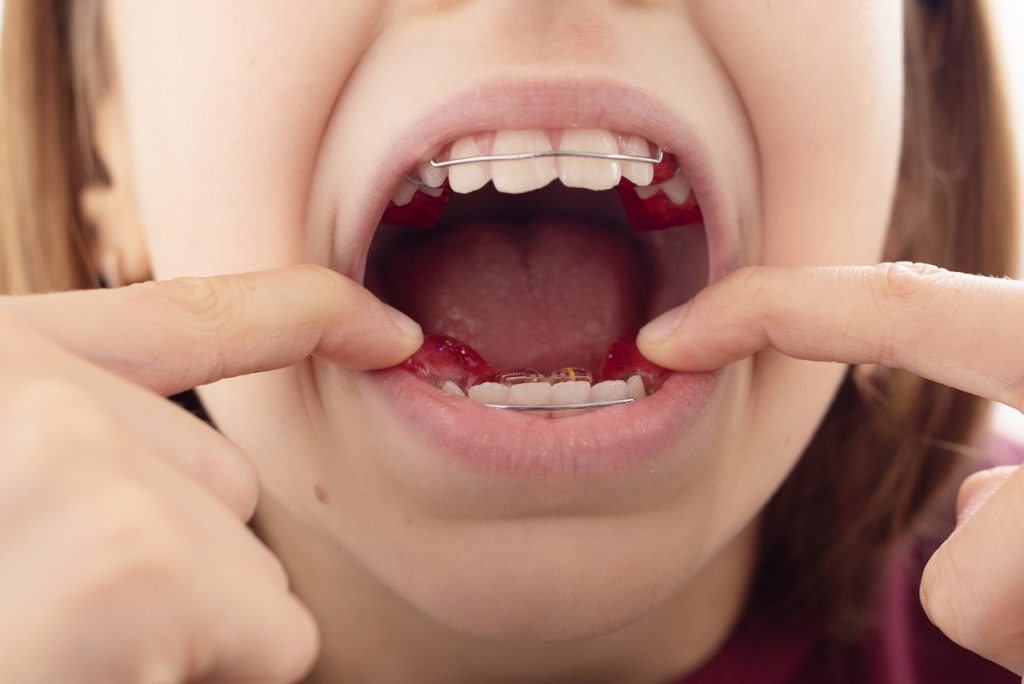- Professional evaluation from an orthodontist is the first step in addressing misaligned teeth.
- Braces can be used to move the teeth into their desired positions over time.
- Clear aligners like Invisalign are a removable alternative with virtually invisible results.
- Orthodontic appliances may be necessary to address specific alignment issues.
- Maintaining excellent oral hygiene is essential for optimal results throughout the realignment process, including brushing twice daily and flossing.
Having misaligned teeth can affect not only the appearance of your smile but also your oral health. Misalignment can lead to difficulty chewing, speech problems, and an increased risk of dental problems like tooth decay and gum disease. However, several ways exist to address misaligned teeth and achieve a straighter, healthier smile. This guide will provide you with five practical tips to fix misaligned teeth.
1. Seek Professional Evaluation
The first step in addressing misaligned teeth is to seek professional evaluation from a qualified orthodontist. An orthodontist specializes in diagnosing, preventing, and treating dental and facial irregularities, including misaligned teeth. They will thoroughly examine your teeth, jaw, and facial structure to determine the extent of misalignment and recommend the most suitable treatment options for you.
2. Invest in Braces
Braces are a widely recognized and effective treatment for correcting misaligned teeth. They consist of metal brackets bonded to the teeth and connected by archwires. Over time, the gentle pressure exerted by the archwires gradually moves the teeth into their desired positions. Braces are highly versatile and can address various alignment issues, including overcrowding, gaps, and crooked teeth.
Investing in high-quality braces is an excellent long-term solution for misaligned teeth. Although the treatment duration may vary depending on the severity of misalignment, braces typically remain on the teeth for one to three years. During this time, regular visits to the orthodontist are required for adjustments and progress checks. Remember, the investment in braces is an investment in your oral health and a beautiful smile.
3. Explore Clear Aligners

If metal braces don’t appeal to you, clear aligners might be an alternative worth considering. Clear aligners like Invisalign are custom-made, transparent trays that fit over your teeth. They gradually shift your teeth into the desired positions, similar to traditional braces, but they are virtually invisible when worn.
Clear aligners offer several advantages over traditional braces. They are removable, allowing you to eat and drink without restrictions and easily maintain your oral hygiene routine. However, wearing them for the recommended 20-22 hours per day is essential for optimal results. Clear aligners are best suited for mild to moderate cases of misalignment, so consult with your orthodontist to determine if they are a suitable option for you.
4. Consider Orthodontic Appliances
Misaligned teeth may sometimes require additional intervention beyond braces or clear aligners. Orthodontic appliances can be used to address specific issues and enhance the effectiveness of treatment. For example, expanders can widen the upper jaw to correct a narrow palate, while headgear can guide the growth and alignment of the jaw.
The use of orthodontic appliances is determined individually, depending on the nature and severity of misalignment. Your orthodontist will evaluate your case and recommend any necessary appliances to complement your treatment plan. It’s essential to follow their instructions carefully and wear the appliances as directed to achieve optimal results.
5. Maintain Excellent Oral Hygiene
Regardless of your chosen treatment, maintaining excellent oral hygiene is crucial throughout the process. Misaligned teeth can create nooks and crannies that are difficult to clean, increasing the risk of plaque buildup and dental problems. Therefore, paying extra attention to your oral hygiene routine is essential.
Here are some tips for maintaining excellent oral hygiene:
Brush Your Teeth Twice a Day
Brushing your teeth twice daily with fluoride and a soft-bristle toothbrush is essential for maintaining excellent oral hygiene. Make sure to thoroughly brush every surface of each tooth, including the backside, for two minutes each time. This will help remove plaque buildup and keep your teeth looking clean and healthy.
Clean Between Your Teeth
Flossing or using interdental brushes at least once daily helps keep plaque from building up in hard-to-reach areas between your teeth. This simple task can make all the difference in preventing gum disease and other dental problems during realignment treatment.
Use Mouthwash

Rinsing with an antiseptic mouthwash can help reduce plaque and bacteria buildup. Mouthwashes also freshen your breath and reduce the risk of tooth decay, so they’re a great addition to your daily oral hygiene routine.
Attend Regular Check-Ups
Visiting your dentist at least twice yearly is essential for maintaining excellent oral hygiene during realignment treatment. Your dentist will be able to evaluate the progress of your realignment treatment and ensure that your teeth and gums remain healthy throughout the process. Professional cleanings every six months will help keep your teeth free from plaque buildup and other dental problems. Taking these steps will ensure that you maintain a beautiful, healthy smile after the realignment treatment is complete
In Summary
Misaligned teeth can be effectively corrected with the help of professional orthodontic treatment. Seek an evaluation from an orthodontist to determine the best course of action for your specific case. Investing in braces or exploring clear aligners are popular treatment options that can provide excellent results. Additional orthodontic appliances may sometimes be necessary to address specific alignment issues. Regardless of the treatment, remember to maintain excellent oral hygiene to support the health of your teeth and gums. You can achieve a straighter, healthier smile and boost your confidence with commitment and patience.






